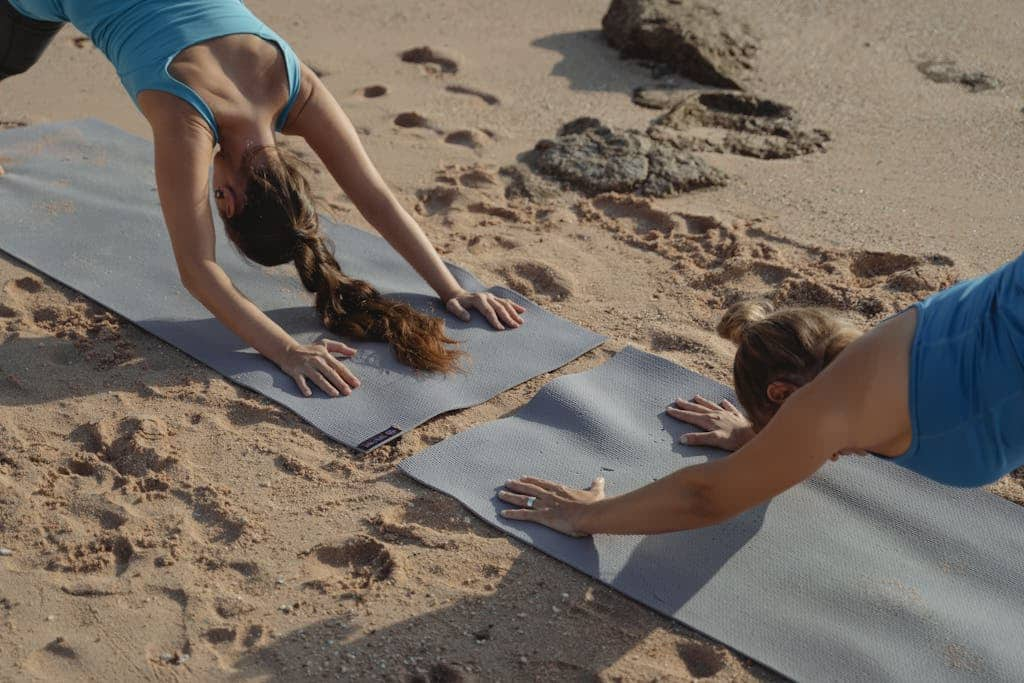
Press PLAY to listen to this post.
A new study published in JAMA confirms what many parents, educators, and pediatric professionals have long suspected: kids in the U.S. are facing a significant rise in chronic conditions—from depression and anxiety to obesity, sleep apnea, and behavioral disorders. Between 2011 and 2023, children became 15–20% more likely to experience chronic health issues. And the numbers are even worse for children of color, who receive less equitable care across the board. So, what can we do?
🧘♀️ Yoga as Preventative Care & Daily Medicine
While yoga won’t replace traditional medical treatment, it does serve as a proven and accessible tool to reduce stress, improve emotional regulation, support physical health, and build self-awareness in kids. These are vital skills for preventing and managing many of the chronic conditions on the rise.
Yoga helps children:
- Calm the nervous system to counteract anxiety and depression
- Build strength and flexibility, which supports better sleep and overall fitness
- Develop focus and self-control to manage attention and behavioral challenges
- Cultivate confidence, compassion, and connection—especially important during times of trauma or adversity
💼 Empowering the Adults Who Support Them
Getting trained in kids yoga isn’t just good for children—it’s transformational for the adults who lead them. Educators, therapists, coaches, and caregivers all benefit from the tools yoga provides. Through It’s Yoga Kids® teacher training, professionals gain the knowledge and confidence to:
- Deliver age-appropriate, trauma-informed yoga practices
- Support social-emotional development in any setting
- Lead with calm, compassion, and cultural awareness
- Foster inclusion and equity in wellness education
The health of our children is not just a personal issue—it’s a public one. And yoga can be part of the solution. In a world where kids are getting sicker, let’s give them tools to feel stronger, calmer, and more in control of their own well-being.
Explore IYK® Training and become a force for healing in your community. Together, we can change the future—one breath, one pose, one child at a time.

Press PLAY to listen to this post.
As summer winds down and the school year approaches, many children (and adults!) feel a mix of excitement and anxiety. New routines, academic pressure, social challenges, and the loss of summer freedom can stir up big emotions. That’s where yoga steps in—not just as a movement practice, but as a mindset tool.
🧘♀️ Why Yoga for Back-to-School?
Yoga helps calm the nervous system, regulate emotions, and create a sense of safety and balance—something every child needs when transitioning into a new school year. Simple breathing exercises, mindful movement, and grounding poses give kids real-time tools to manage worry, focus their attention, and build confidence from the inside out.
💼 Professional Development with It’s Yoga Kids®
Educators, therapists, and youth professionals can take their skills to the next level with It’s
Yoga Kids® Professional Development Training. Our evidence-based approach teaches how to integrate yoga and mindfulness into classrooms, clinics, and afterschool settings to support the whole child.
Through our Essentials and Advanced Certifications, adults gain tools to help kids:
- Ease test anxiety and build resilience
- Improve attention, self-regulation, and classroom behavior
- Cultivate emotional intelligence and leadership skills
- Foster inclusivity and body awareness through movement
✨ When educators feel empowered, students feel safe.
Whether you're a parent helping your child adjust to school or a professional seeking tools to support youth success, yoga is a powerful, proven practice to reduce stress and boost well-being. This back-to-school season, let’s breathe, move, and grow—together.
Ready to learn more?
Explore our upcoming trainings and help create calmer classrooms and more confident kids with It’s Yoga Kids®.

Press PLAY to listen to this post.
Keep your kiddos happy, active, and thriving all season long with these simple and engaging ways to support their mental and physical well-being:
- Start the Day with Yoga 🧘♀️
Just 10 minutes of breathing and stretching helps kids feel calm, focused, and ready for adventure! - Sign Up for Yoga Camp 🎒
Kids Yoga Camp = movement, mindfulness, crafts, and connection! It’s a screen-free zone for building strength and confidence. - Hydrate Like a Hero 💦
Keep reusable water bottles close by and flavor with fruits like lemon, berries, or cucumber to make hydration fun! - Snack Smart 🍇🥕
Trade chips for colorful snack trays filled with fruit, veggies, hummus, and nuts. Let kids “build their own” snack plates! - Go Outside Every Day 🌳
Walk, run, bike, explore! Nature boosts mood and energy—plus, it’s the best place to let off steam and spark imagination. - Create a Calm-Down Corner 🧸
Set up a cozy spot with books, pillows, fidgets, or calming music so kids have a safe place to reset when they feel overwhelmed. - Keep a Summer Journal ✏️
Encourage kids to draw or write one thing they loved each day—great for reflection and emotional awareness. - Have Tech-Free Time 🚫📱
Designate blocks of the day for no screens. Use the time for games, puzzles, or creative projects together. - Move Together 🤸♂️
Make movement part of family time—dance parties, obstacle courses, or yoga poses in the backyard! - Model Mindfulness 💛
When you breathe deeply, slow down, and stay present, your child learns to do the same. Be their calm in the summer chaos.
🌈 This summer, let's nourish bodies, calm minds, and make memories that support lifelong wellness. Join us for Kids Yoga Camp and give your little one the tools they need to shine from the inside out!

Press PLAY to listen to this post.
The dog days of summer—those hot, hazy weeks when energy runs low and tempers can run high—are the perfect time to introduce kids yoga into your routine. While the sun blazes and routines relax, yoga offers children a cool, calming way to stay grounded and engaged.
At It’s Yoga Kids®, we make movement fun and meaningful—even in the heat! From playful “downward dogs” to gentle breathing and rest, yoga helps kids beat the summer slump by:
- Regulating emotions when the heat gets intense
- Building strength and flexibility without overexertion
- Creating calm through mindful movement and rest
- Encouraging hydration, breath awareness, and body care
Try a “cool down” yoga break:
🦁 Lions Breath to release frustration
🐶 Down Dog for stretching and stability
☮️ Savasana with a story for relaxation
As summer winds down, yoga helps kids transition back to structure with more ease, focus, and peace of mind.
Let the dog days be your cue to pause, stretch, and smile—together. ☀️🐾🧘♂️
